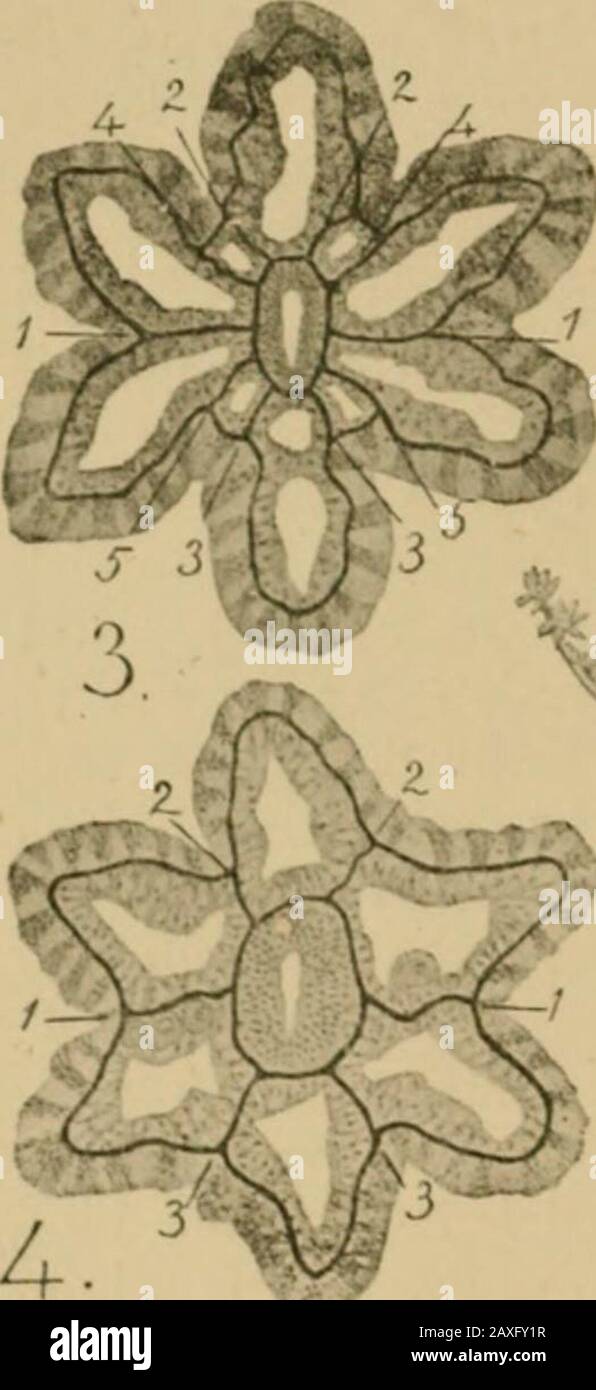The porifera and coelentera . ulculus are present,and the tentacles corresponding to the sulcar and sulcular inter-mesenterial chambers are longer than the rest. In most of thegenera there are ten mesenteries, which do not bear muscle[ banners. The genus Leiopathes is an exception, having twelve, mesenteries. Where ten mesenteries are present, they have thearrangement shown in Fig. XXVI. 2. The sulcar and asulcar mesenterial pairs are short; the sulco-lateral and sulculo-lateral pairs are somewhat longer, but the 54 THE ANTHOZOA lateral mesenteries which correspond with the long axis of thecol

Image details
Contributor:
The Reading Room / Alamy Stock PhotoImage ID:
2AXFY1RFile size:
7.1 MB (195.9 KB Compressed download)Releases:
Model - no | Property - noDo I need a release?Dimensions:
1071 x 2333 px | 18.1 x 39.5 cm | 7.1 x 15.6 inches | 150dpiMore information:
This image is a public domain image, which means either that copyright has expired in the image or the copyright holder has waived their copyright. Alamy charges you a fee for access to the high resolution copy of the image.
This image could have imperfections as it’s either historical or reportage.
The porifera and coelentera . ulculus are present, and the tentacles corresponding to the sulcar and sulcular inter-mesenterial chambers are longer than the rest. In most of thegenera there are ten mesenteries, which do not bear muscle[ banners. The genus Leiopathes is an exception, having twelve, mesenteries. Where ten mesenteries are present, they have thearrangement shown in Fig. XXVI. 2. The sulcar and asulcar mesenterial pairs are short; the sulco-lateral and sulculo-lateral pairs are somewhat longer, but the 54 THE ANTHOZOA lateral mesenteries which correspond with the long axis of thecolony are very long, and are the only mesenteries which beargonads. They are conveniently distingnished as the reproductivemesenteries. The development of the Antipathidea is unknown, and it is therefore impossible to say what is the sequence of themesenteries ; but it seems probable, from a comparative studyof the existing genera, that the sequence conforms to theEdwardsio-Actinian type. The tentacles are placed over the sulcar.